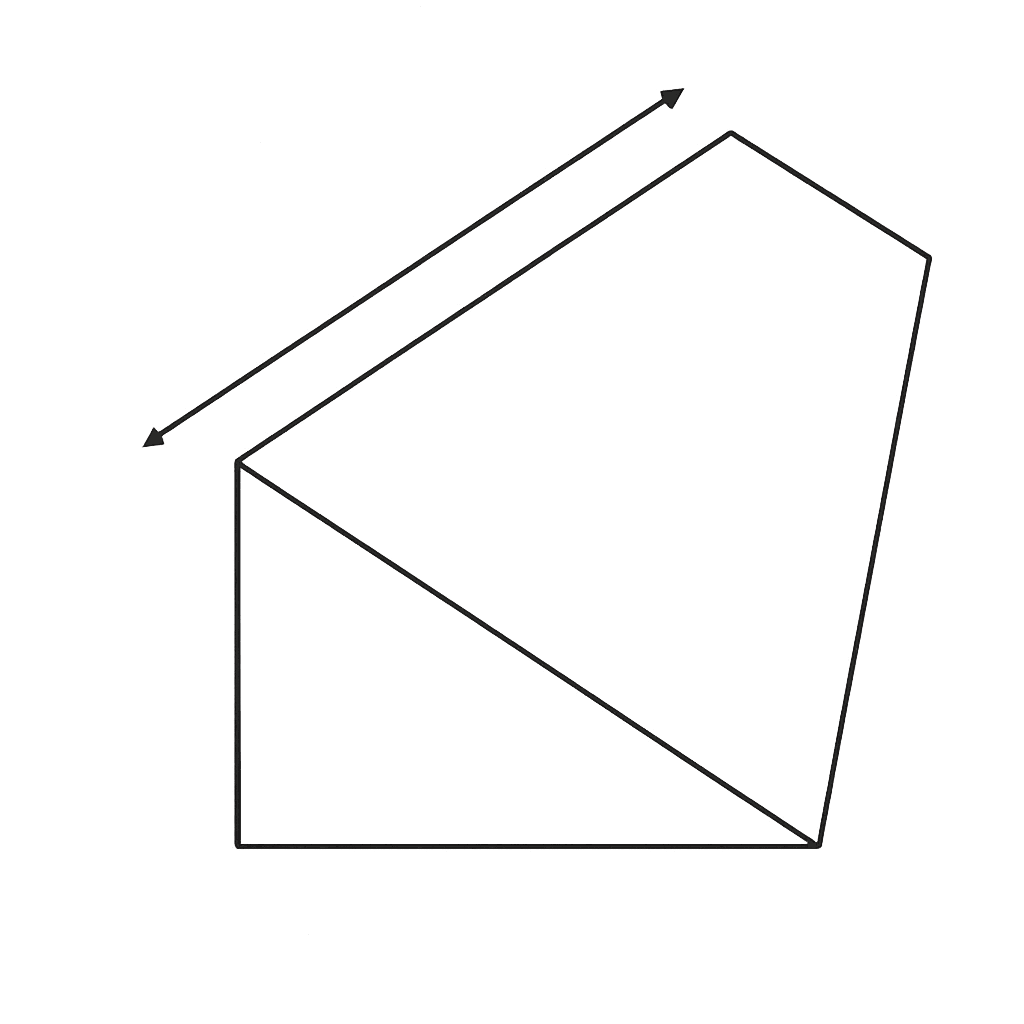Solid geometry
Solid geometry is the part of geometry that deals with figures in three dimensions. While plane geometry deals with flat figures, solid geometry works with bodies that have length, width and height.

A prism with two identical right-angled triangles as base and a height
Main types of solid figures
Solid figures can be divided into different groups:
- Prisms: Figures with two parallel and identical bases that are a polygon, e.g. triangular, quadrilateral and pentagonal prisms.
- Cylinders: Resemble prisms, but have curved bases, e.g. circular or elliptical cylinders.
- Pyramids and cones: Figures with one base and a vertex (apex).
- Frustums: Truncated pyramids or cones, with two parallel bases of different sizes.
- Spheres: Completely round figures where all points are equally distant from the center.
- More advanced forms: Composite or rotated figures, where more advanced methods are used to find volume and surface area.
From plane to space
Solid geometry builds on the concepts of plane geometry.
Where in plane geometry one calculates lengths and areas, in solid geometry one can also calculate volume. This allows us to describe and understand the structures we encounter in architecture, physics, engineering and 3D modelling.